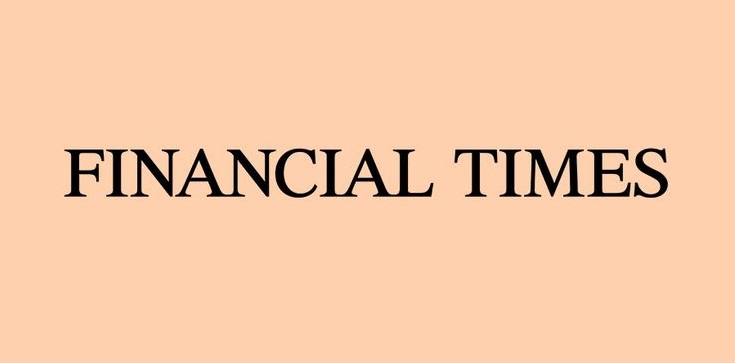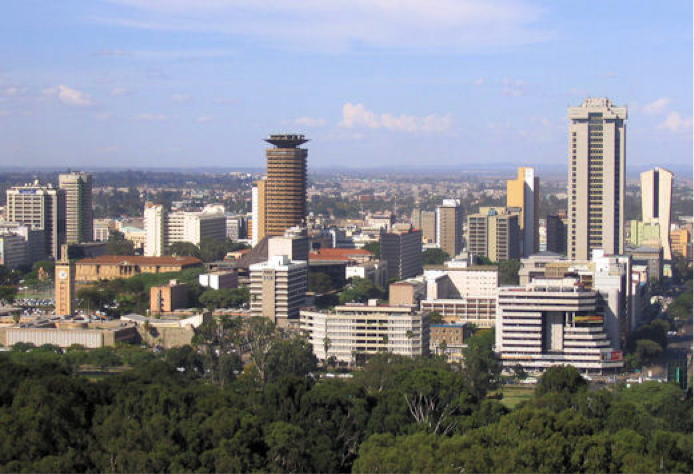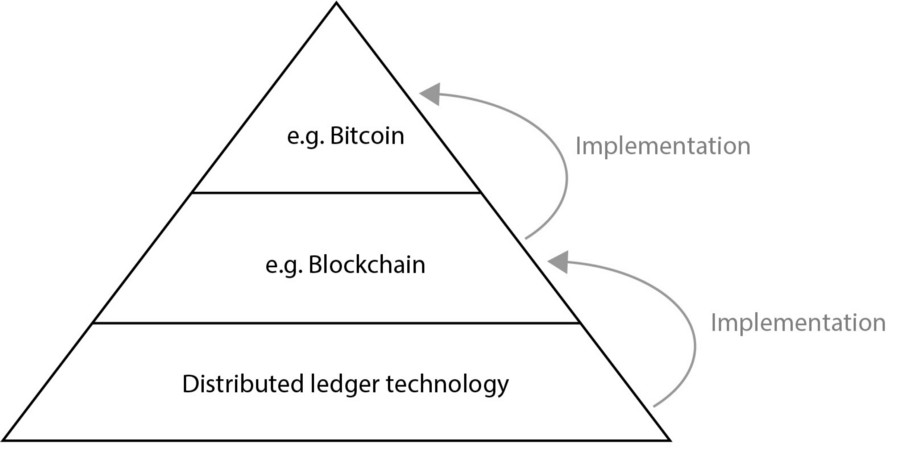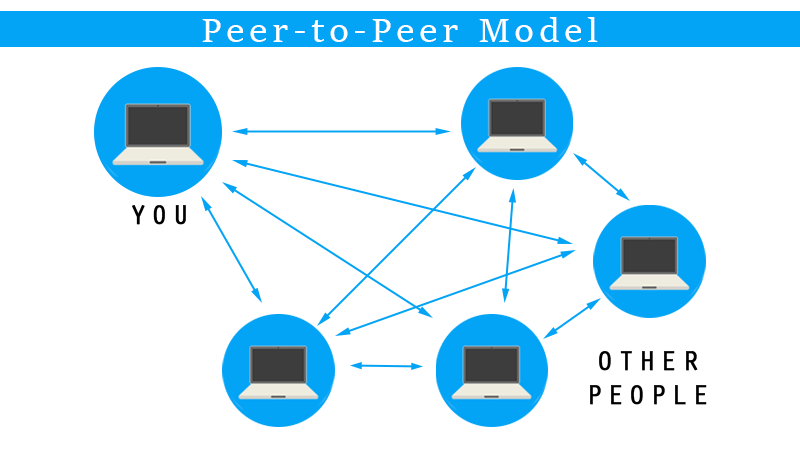
The emergence of the blockchain is, by now, known in the broader global society, far beyond merely the developer communities. Due to various advances in technology, media attention, and fundamental social interest related to money and wealth. The current economic crisis, perhaps the greatest in history, has made the issue all the more relevant, in fact crucial, for us to build out Web 3.0 and its integral layer of trust that will make way for an open-source economy.
Blockchain Technology and the Velocity of Trust
Even working in conjunction with the current economic system, blockchain technology has been seen as valuable to meet various needs. For instance, on March 5th, 2020, the Financial Times (FT), perhaps one of the most well-known economic news sources and one that is generally unfavorable to the blockchain, ran a special report “How digital technologies are transforming the supply chain.”
This report mentions explicitly small farmers in Africa and how they can benefit from blockchain technology. In fact, it references citizens in developing countries who are unable to hold a record of transactions. This can make it hard for citizens to get proper credit, which makes them vulnerable to predatory lenders.

The Financial Times specifically reports that blockchain can help “cassava and barley farmers” to keep an immutable record that can provide the verification necessary for trust between lenders, receivers, and producers, thereby creating the opportunity for better financial services and products. This article was published as the Covid-19 Pandemic began to scale up, and as the economy went into collapse due to the fact of the problems with supply chains that will inevitably follow such catastrophes as we see today.
Blockchain Technology is Growing Popular
Additionally, over the past few years, governments, banks, corporations, universities, and other major social institutions have all become involved in interpreting, shaping, and regulating the area or “space” of the blockchain creating a possible, new technosocial and economic reality as the age-old debate on money, credit, and debt continues with new technologies. The blockchain has been reported on by virtually all media outlets and from many angles reaching from analytical to optimistic to pessimistic and, of course, hype.
Over the last couple of decades, there have been many people working on cryptography and money, whereby 2008, we saw Bitcoin released during the Great Recession. What we began to witness was a broader development moving to a distributed system that could lead to the relocalization of the global economy. The political and economic climate in the U.S. that ended the ideology of neoliberal globalization in 2008 resulted in a multipolar world, already underway with Brazil, Russia, India, China, and part of Africa, and has had the effect of expanding distributed systems.

Africa’s “Silicon Savannah”
For example, Nairobi has proven to be a hotspot for Internet development, and is now known as a “Silicon Savannah”. This comes as young people in the country embraces the opportunities to get involved in P2P, which led to a unique dynamism. In 2011, the Oxford Internet Institute said in the beginning of one of its studies, “East Africa was the last major region on Earth without fiber-optic broadband Internet access, until the summer of 2009.”
By late 2019, the World Bank reported, “Kenya has seen its Information and Communications Technology (ICT) sector grow an average of 10.8% annually since 2016, becoming a significant source of economic development and job creation with spillover effects in almost every sector of the economy.” The telecommunications industry has a difficult time keeping up with the dynamism in a country that still has significant structural problems, including the digital divide. Kenya is an important example of what is possible already and what can be hoped for as the blockchain can be a part of the solution as new open source business development occurs.
Internet of Verification
A significant aspect of the larger Web 3.0 and the new economy, I call the Internet of Verification (IoV), where the blockchain is the technical cryptographic verification layer of Web 3.0. The IoV is the functional system of emerging peer-to-peer (P2P), machine-to-machine (M2M), and Internet of Things (IoT) technologies, which include a number of systems of verification of which the blockchain is the most reported. Others include the Tangle and Hashgraph or directed acyclic graphs (DAGs), Holochain or the digital hash table (DHT), and others such as Nano that contain a mixture of the blockchain and DAG. Here, we can see the next generation of the Internet.

Creating a true DLT system, or “Distributed Ledger Technology” system, was an enormous and challenging task solved by developers by 2008 and published in the Nakamoto whitepaper on Bitcoin, where the “digital coin [is] as the chain of digital signatures.” The verification of the digital ledger of the blockchain has typically been based on a hash or digital fingerprint with the chronological linking of transactions where a problematic math problem called a cryptographic hash enigma must be solved by computers where “A timestamp server works by taking a hash of a block of items to be timestamped and widely publishing the hash, such as in a newspaper or Usenet post.” Nakamoto chose Hashcash over the newspaper model of a process referred to as “mining” and publishing by a vast number of computers and, therefore, peer-to-peer (P2P).
When successful completion of the math problem is verified by a “consensus” of miners, they receive a reward of the cryptocurrency. Then, this process is known as proof-of-work (hash-based proof of work), repeats itself. Since the system is open for all to see, and verification practically irreversible, a high level of trust is achieved based on the technical system. This new form of trust or reification of trust is the essential matter and what gives value to the emerging technology. Anything from financial transactions to land titles, family heirlooms, cassava, genetic material, seeds, pharmaceutical logistics for verification of origin, shipments of oil, or other things of value are all possible to digitize and verify on the Internet of Verification.
Open-Source Systems and Verification
Aside from cryptographic verification of accounting, another extraordinary development of this emergent technology is that it provides for a better system for moving between the digital and physical worlds – digital bits and material atoms. The literal velocity of such a system could make it possible for an open-source or collaborative system that could simply outcompete the current economy through funding, innovation, production, and distribution – in other words, a new economy.
The potential for this new economy is based on the excellent “migration” of knowledge on to the Internet realized through the digitization of education and design that has occurred over the last few decades. Code itself is a productive matter such as software operating on the Internet, hence blockchain technology and the Internet of Verification.
This vast repository of wealth is referred to as the digital commons where the blockchain has given us a new basis for the possibility of the bits to become atoms in large-scale, distributed physical verification production. With the further development of open source production and verification, global society could invoke the protection of open source and the commons, while at the same time enabling the creation of a new economy through the Wealth of Networks. Combining these ideas into practical reality would create the conditions for widespread participation in innovation and production and dwarf anything we have known up to this point.
The Rise of a Collaborative Blockchain Economy?
The competitive edge from a collaborative economy would be much more significant due to innovators interacting through digital systems such as social media, creation of content on various platforms such as open science and knowledge platforms such as Galaxy Zoo, Wikipedia, and the numerous educational video broadcasts, building a car with Wikispeed, coding on Linux or Javascript/Rust, and creating content on the Brave browser with the use of the Basic Attention Token (BAT). Cars, computers, biomedical research, astronomy, or just about anything one can think of are all in the early stages of open source development, and production is occurring not only at a fraction of the previous cost but for very little, approaching zero marginal cost.

When cryptographic verification was employed to solve the problem in 2008 with the release of the Bitcoin whitepaper under the pseudonymous name, Satoshi Nakamoto, a significant step towards trust was achieved; now, the velocity will be crucial towards an open-source economy. As the primary functional expression of blockchain technology, Bitcoin has proven to be a highly resilient technology, which has been attacked technically, politically, and socially by the most powerful actors.
With Bitcoin leading the way, blockchain technology is one of the most critical open science projects creating a means for more substantial innovation in the IoV, creating the Wealth of Networks. Bitcoin has begun to be accepted as a store of wealth or digital gold. Furthermore, with the global economy in an ongoing recession, we can expect that the Internet of Verification will gain more prominence in the emergence of an open-source economy.
IoV and dApps
If the Internet of Verification (IoV) is the overarching category of verification in P2P protocols that relies on the network effect of distributed computing to maintain a particular digital ledger in real-time, then distributed applications and smart contracts will be the beginning of how the system will work to bring about a new economy. Further, when we turn bits and atoms into an integrated system of new wealth production, the open-source economy will be able to meet various everyday needs that are currently produced in the public and private sectors.

P2P Model
If the major characteristic of the IoV is the matter of a distributed virtual system, then the challenge is of how distributed the system will be in reality, which applies to scale and scope in production or what the P2P community calls cosmological production’. Moreover, protocols such as Ethereum allow for the programming of distributed applications (dApps), similar to the apps that we know, but operate with verification and the ability to store value such as Ether and to run various operations including the coordination of a business and the ‘lego’ type system of distributed finance or DeFi.
Thus, this system is a matter of programmable money, but a platform for operating any form of project, business, or governance system. The still theoretical goal of Ethereum is to be a universal computer. Still, for now, the extraordinary capacity for the emerging system has been realized for fundraising and now in DeFi. If the new upgrade to Ethereum succeeds and other competitors gain in use, we can expect DeFi to continue to gain exponential value as dApp platform savings and loans become a funding layer for open source.
The Reification of Trust
This open-source technical system or Internet of Verification has emerged and is growing, while a complementary social aspect is arising, which what philosopher of technology, Soraj Hongladarom, calls ‘a reification of trust.’ It is an emerging realization of trust for the new technosocial reality of a new economy.
After the early days of the publicly funded and developed ARPANET (Advanced Research Projects Agency Network) in the university system, the Internet moved into the public where we saw not only further technical innovation due to the hacker, developer, gamer, and general P2P communities, but new ethics and trust. Now, a generation later, once the challenge of verification has been addressed by the developers, who remarkably bootstrapped this major open science project to create a new system for value, trust has been achieved through open source verification. Communities have taken form such that the basis of a new production system can move forward that was incubated in the Maker Spaces.
We have arrived at a point today where the importance of the emergence of the Internet of Verification cannot be overstated, similar to the early beginning of the Internet and the World Wide Web. The subsequent innovations on the Internet over the past, such as the development of data communication (HTTP) and the advent of search and cataloging (Google), are all of foremost importance. With the integrity of the cryptographic system coded into the IoV, the new form of trust can emerge similar to the trust that we developed for many other previous technical systems, e.g., the engineering systems of airplanes.
The Velocity of Trust and Trust Reification
With global access to the Internet, almost 4 billion people have used the Internet; economic production can become fully distributed and relocalized in peer-to-peer production. The code of the IoV makes it possible to bypass financial and other intermediaries and streamline economic production – P2P and end-to-end (E2E). Such financial inclusion, particularly the use of protocols, platforms, and cryptocurrencies, can be used to create and connect value or wealth to production. The widest ability to collaborate between innovators, producers, developers, and many others will create rapid innovation as the basis of distributed wealth. To the extent that such a system can be both distributed and coordinated to produce what is necessary for humanity within ecological integrity, it can be called true innovation. Thus, there are plenty of reasons for rational optimism concerning the blockchain as the extent of talent, and highly motivated new learners are increasing dramatically, regardless of what is reflected in prices on various exchanges. Technically speaking, verification leading to the reification of trust, or the Internet of Verification, may likely prove to be one of the top developments of the Digital Age; important for a planetary society facing multiple challenges due to the now practical possibility of the democratization and relocalization of production.
Layne Hartsell




